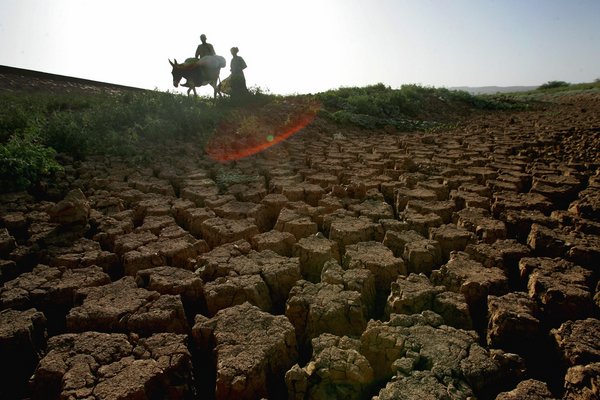- Share this article
- Subscribe to our newsletter
Dried freshwaters contribute to climate change
Dry inland waters are underrated players in climate change, an international research team warned in January 2019. Around 90 000 square kilometres of water surface have already vanished in the last 30 years. This trend is not only a threat to drinking water reserves and major ecosystems – dried freshwaters also play an important role in the global carbon cycle, and may be responsible for the release of CO2 and other climate-relevant gases.
According to the researchers, rivers, lakes, ponds and streams that fall partially or completely dry, or that have falling water levels, may play a significant role in global CO2 emissions. When permanently dry lake sediments and seasonally dry surfaces of all different freshwaters are considered, estimates for CO2 fluxes from continental inland waters to the atmosphere must be increased by about 10 per cent. As such, freshwaters play a more important role in the global carbon cycle than previously assumed.
Freshwaters play an important role in the global carbon cycle
Freshwaters, and lakes in particular, primarily act as carbon sinks – long-term carbon accumulation occurs in their sediments. If water levels fall, however, an increasing share of the lake bottom is exposed to atmospheric oxygen. The drier sediments become, the more aerobic respiration increases – dead organic matter in the lake bottom is used by bacteria, which leads in turn to the production of CO2.
Around 0.2 gigatonnes of CO2 are emitted globally by dry inland waters each year, the researchers say. As a comparison: the annual CO2 flux from continental freshwaters is approximately 2 gigatonnes, and anthropogenic fluxes from fossil fuels total around 9 gigatonnes each year.
Taking a look at water reservoirs
The study shows that water reservoirs must also be re-visited. Reservoirs are man-made waters where it is consciously accepted that areas of sediments repeatedly fall dry during water level fluctuations.
The researchers point out that it is essential to undertake a holistic assessment of the role played by such systems in the carbon cycle. The assessment also includes the provision of detailed information about greenhouse gas emissions. This particularly holds true when it comes to selecting sites for the construction of potential new reservoirs, but also with regard to how the management of existing reservoirs can be adapted or whether, perhaps, such reservoirs should even be removed.
(IGB/ile)
More information:
Emissions from dry inland waters are a blind spot in the global carbon cycle. Earth-Science Reviews. - 188(2019), p. 240-248: https://www.sciencedirect.com/science/article/pii/S0012825218301971





Add a comment
Be the First to Comment